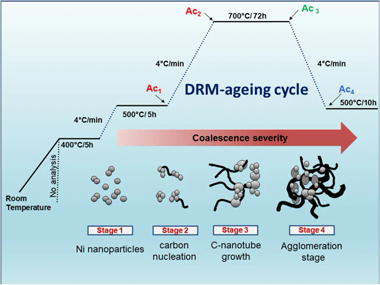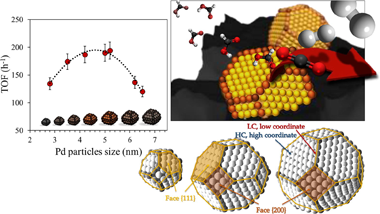Artículos SCI
2021
2021
Fotocatálisis Heterogénea: Aplicaciones
Photocatalytic Treatment of Stained Wastewater Coming from Handicraft Factories. A Case Study at the Pilot Plant Level
Murcia Mesa, JJ; Hernández Niño, JS; González, W; Rojas, H; Hidalgo, MC; Navío, JAWater, 13 (2021) 2705
Show abstract ▽
UV/H2O2 process and TiO2-based photocatalysis were studied in the present work. The effectiveness of these methods was tested in the treatment of effluents taken from handicraft factories. Microorganisms, dyes, and different organic pollutants were detected in the industrial effluents. The experimental procedure for the wastewater treatment was carried out in a patented sunlight reactor on a pilot plant scale. From this study, UV/H2O2 was found to be the best treatment for dye elimination. The optimal peroxide dosage for the degradation of dyes and the elimination of bacteria was 0.07 M. In this case, 70.80% of discoloration was achieved after 7 h of sunlight exposure, under an average sunlight intensity of 3.42 W/m2. The photocatalytic treatment based on TiO2 achieved the highest elimination of coliform bacteria and the lowest TOC value; however, the presence of this material in the reactor had a detrimental effect on the overall elimination of dyes. A combination of both UV/H2O2 and TiO2 treatments significantly improves the dyes discoloration, the elimination of bacteria, and the organic compounds degradation. Some of the results of this study were presented at the 4th Congreso Colombiano de Procesos Avanzados de Oxidación, 4CCPAOx.
Octubre, 2021 | DOI: 10.3390/w13192705
Materiales Coloidales
Si sputtering yield amplification: a study of the collisions cascade and species in the sputtering plasma
Cruz, J; Sangines, S; Soto-Valle; Muhl; Sierra, I; De Lucio-Morales, O; Mitrani, A; Calderon-Olvera, RM; Mendoza-Perez, R; Machorro-Mejia, RJournal of Physics D-Applied Physics, 54 (2021) 375201
Show abstract ▽
The sputtering yield amplification (SYA) is a phenomenon based on doping a sputtering target with atoms of higher atomic mass. This doping changes the depth and the direction of the collision cascade in the target surface promoting a higher ejection of target atoms. In this work, we present a new way of generating the SYA phenomenon without the need of expensive and complex deposition systems. This was accomplished by increasing the working pressure and adding small pieces of W, as dopant element, on the racetrack of a Si target. The physical phenomena necessary to promote the SYA, for our experimental parameters, were analysed in two different deposition chambers and two sizes of sputtering targets. Based on the collisions in the gas phase, a calculation on the number of W atoms returning to the racetrack area was made, considering the number of atoms deposited on the thin films, to determine their effect on the cascade of collisions. In addition, calculations with the simulation of metal transport code were developed to determine the location on the racetrack zone the returning atoms were redeposited. By using reference samples placed on the racetrack of the Si target, we found that the percentage of SYA depends on the number of dopant atoms redeposited as well as the depth distribution these atoms had in the racetrack surface.
Septiembre, 2021 | DOI: 10.1088/1361-6463/ac0c4e
Materiales Nanoestructurados y Microestructura
Pd-C Catalytic Thin Films Prepared by Magnetron Sputtering for the Decomposition of Formic Acid
Arzac, GM; Fernandez, A; Godinho, V; Hufschmidt, D; de Haro, MCJ; Medran, B; Montes, ONanomaterials, 11 (2021) 2326
Show abstract ▽
Formic acid is an advantageous liquid organic hydrogen carrier. It is relatively nontoxic and can be synthesized by the reaction of CO2 with sustainable hydrogen or by biomass decomposition. As an alternative to more widely studied powdery catalysts, supported Pd-C catalytic thin films with controlled nanostructure and compositions were newly prepared in this work by magnetron sputtering on structured supports and tested for the formic acid decomposition reaction. A two-magnetron configuration (carbon and tailored Pd-C targets) was used to achieve a reduction in Pd consumption and high catalyst surface roughness and dispersion by increasing the carbon content. Activity and durability tests were carried out for the gas phase formic acid decomposition reaction on SiC foam monoliths coated with the Pd-C films and the effects of column width, surface roughness and thermal pre-reduction time were investigated. Activity of 5.04 mol(H2)center dot g(Pd)(-1)center dot h(-1) and 92% selectivity to the dehydrogenation reaction were achieved at 300 degrees C for the catalyst with a lower column width and higher carbon content and surface roughness. It was also found that deactivation occurs when Pd is sintered due to the elimination of carbon and/or the segregation and agglomeration of Pd upon cycling. Magnetron sputtering deposition appears as a promising and scalable route for the one-step preparation of Pd-C catalytic films by overcoming the different deposition characteristics of Pd and C with an appropriate experimental design.
Septiembre, 2021 | DOI: 10.3390/nano11092326
Materiales y Procesos Catalíticos de Interés Ambiental y Energético
Examination of the Deactivation Cycle of NiAl- and NiMgAl-Hydrotalcite Derived Catalysts in the Dry Reforming of Methane
Abdelsadek, Z.; Holgado, J.P.; Halliche, D.; Caballero, A.; Cherifi, O.; Gonzalez-Cortes, S.; Masset, P.J.Catalysis Letters, 151 (2021) 2696-2715
Show abstract ▽

The importance of the dry reforming of methane (DRM) lies in its capability to upgrade two greenhouse gases (CH4 and CO2) into synthesis gas (CO and H-2), which is one of the main building block for synthesizing hydrocarbons. However, the Ni-based catalysts for DRM reaction usually have a major catalytic stability drawback. This works aims to assess the catalytic activity and stability of two Ni-based catalysts obtained from hydrotalcite (HT) precursors (i.e., NiAl-HT and NiMgAl-HT). The precursors, calcined (-c), reduced (-R) and spent samples were characterized by a series of techniques to gain insight into the influence of MgO over Ni-based catalyst in the drying reforming of methane. An in-situ ageing cycle process to speed up the deactivation of hydrotalcite-derived catalysts showed that the NiMgAl-HTc-R catalyst displayed a higher activity and resistance to coke formation (stability) than NiAl-HTc-R because of the introduction of Mg into hydrotalcite structure in the catalyst precursor. The presence of this element enhances several factors involved in the stability of Ni-based catalysts for the DRM process such as the reducibility and textural features of the catalysts, size and dispersion of Ni-0 nanoparticles and also maintains a good compromise between the acid and base properties of the solid catalysts.
Septiembre, 2021 | DOI: 10.1007/s10562-020-03513-4
Química de Superficies y Catálisis
Structure-sensitivity of formic acid dehydrogenation reaction over additive-free Pd NPs supported on activated carbon
Santos, J.L.; Megías-Sayago, C.; Ivanova, S.; Centeno, M.A.; Odriozola, J.A.Chemical Engineering Journal, 420 (2021) 127641
Show abstract ▽

In this study the size-activity dependence of palladium based catalysts in formic acid dehydrogenation reaction was investigated and evaluated. A wide range of particle sizes was considered and the catalyst series were prepared upon variation of some synthetic parameters, precursor and solvent nature in particular. Synthesis method variations affect significantly Pd particle size and results in diverse activity toward hydrogen production. An optimal size was observed and explained by the diverse proportion of low and high coordinated Pd states available for different samples within the series. The evaluation of particles much bigger than 6 nm changes importantly the fraction of high and low coordination atoms and allows the clear confirmation of the importance of the presence of low coordination atoms on the surface of catalyst.
Septiembre, 2021 | DOI: 10.1016/j.cej.2020.127641
- ‹ anterior
- 68 of 410
- siguiente ›














